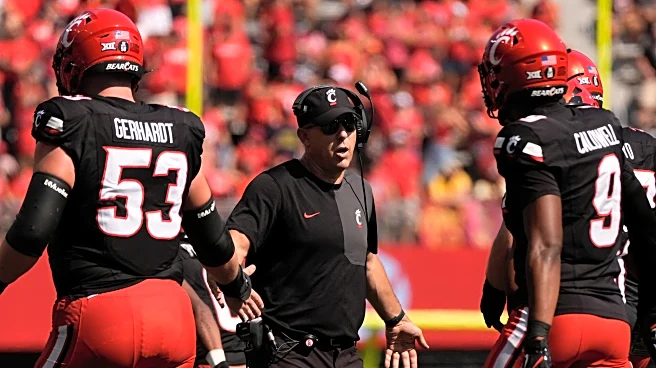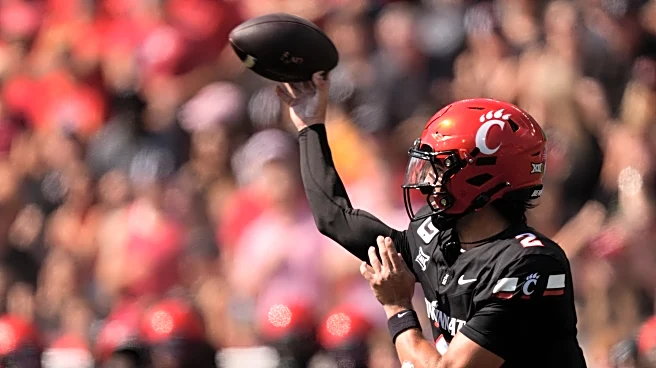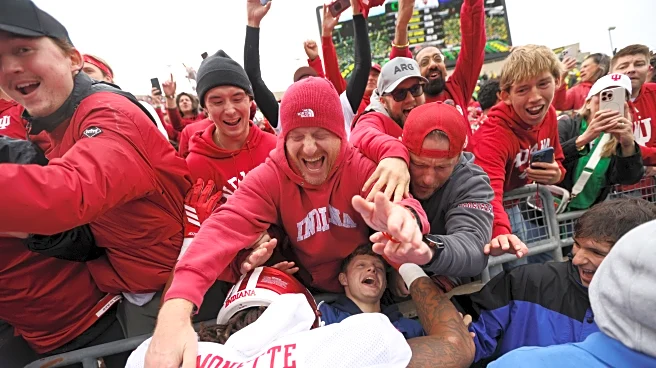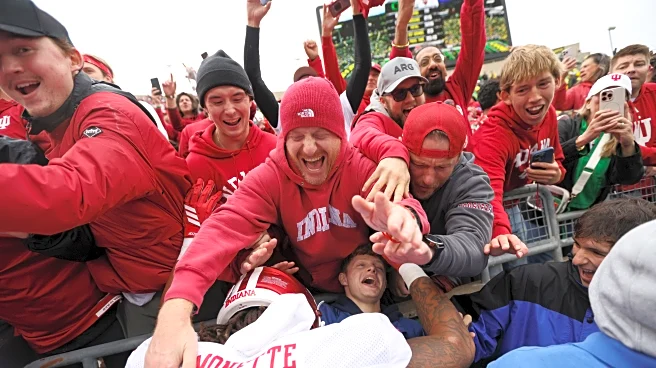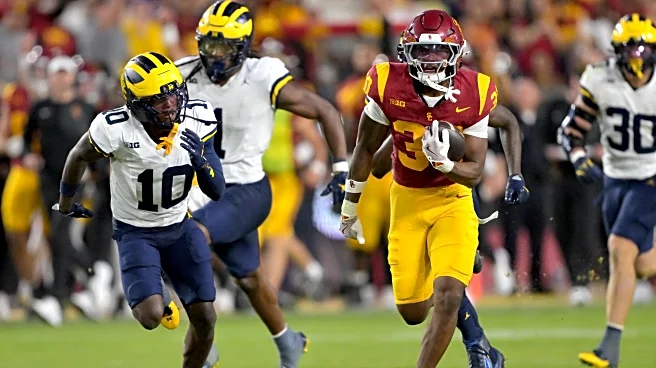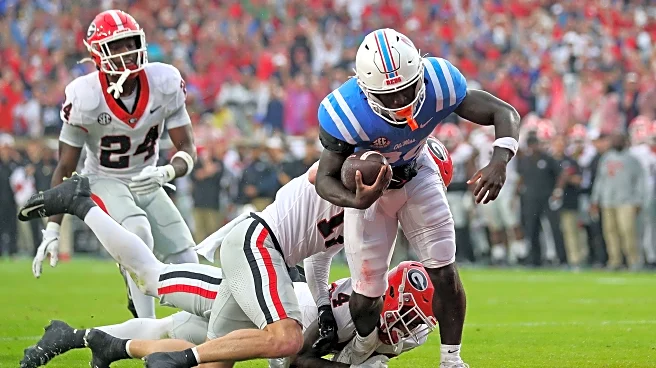What's Happening?
Cincinnati Bearcats have emerged as a significant contender in the Big 12 Conference, achieving their first AP Top 25 ranking in nearly three years. Currently ranked No. 24, the Bearcats are on a five-game
winning streak and share the top spot in the conference with No. 7 Texas Tech and No. 15 BYU, each holding a 3-0 record. Under the leadership of coach Scott Satterfield, Cincinnati has shown remarkable progress, having moved into a new $134 million facility in June. The team, which was the first non-Power Five team to make the College Football Playoff in 2021, has rebuilt its roster and improved its performance significantly since joining the Big 12 in 2023.
Why It's Important?
Cincinnati's rise in the AP Top 25 highlights its growing influence within the Big 12 Conference and its potential to impact the college football landscape. This development is significant for the Bearcats, who are aiming for bowl eligibility for the first time since 2022. The team's success could enhance its reputation and attract more talent, boosting its competitiveness in future seasons. The Bearcats' performance also reflects the broader trend of non-Power Five teams challenging traditional powerhouses, potentially leading to shifts in conference dynamics and playoff considerations.
What's Next?
Cincinnati faces a crucial matchup against Oklahoma State, which could further solidify its position in the conference and ensure bowl eligibility. The Bearcats have a favorable schedule ahead, avoiding games against top contenders like Texas Tech and Arizona State. Key upcoming tests include matches against No. 23 Utah and BYU, which will be pivotal in determining their standing in the conference. Continued success could lead to increased visibility and influence within college football, potentially affecting recruitment and strategic planning.
Beyond the Headlines
Cincinnati's journey underscores the challenges and rewards of transitioning from a non-Power Five team to a competitive force in a major conference. The Bearcats' ability to maintain team cohesion amidst roster changes and adversity highlights the importance of strong leadership and strategic planning in collegiate sports. Their success may inspire other programs to pursue similar paths, potentially leading to a more diverse and competitive college football environment.


